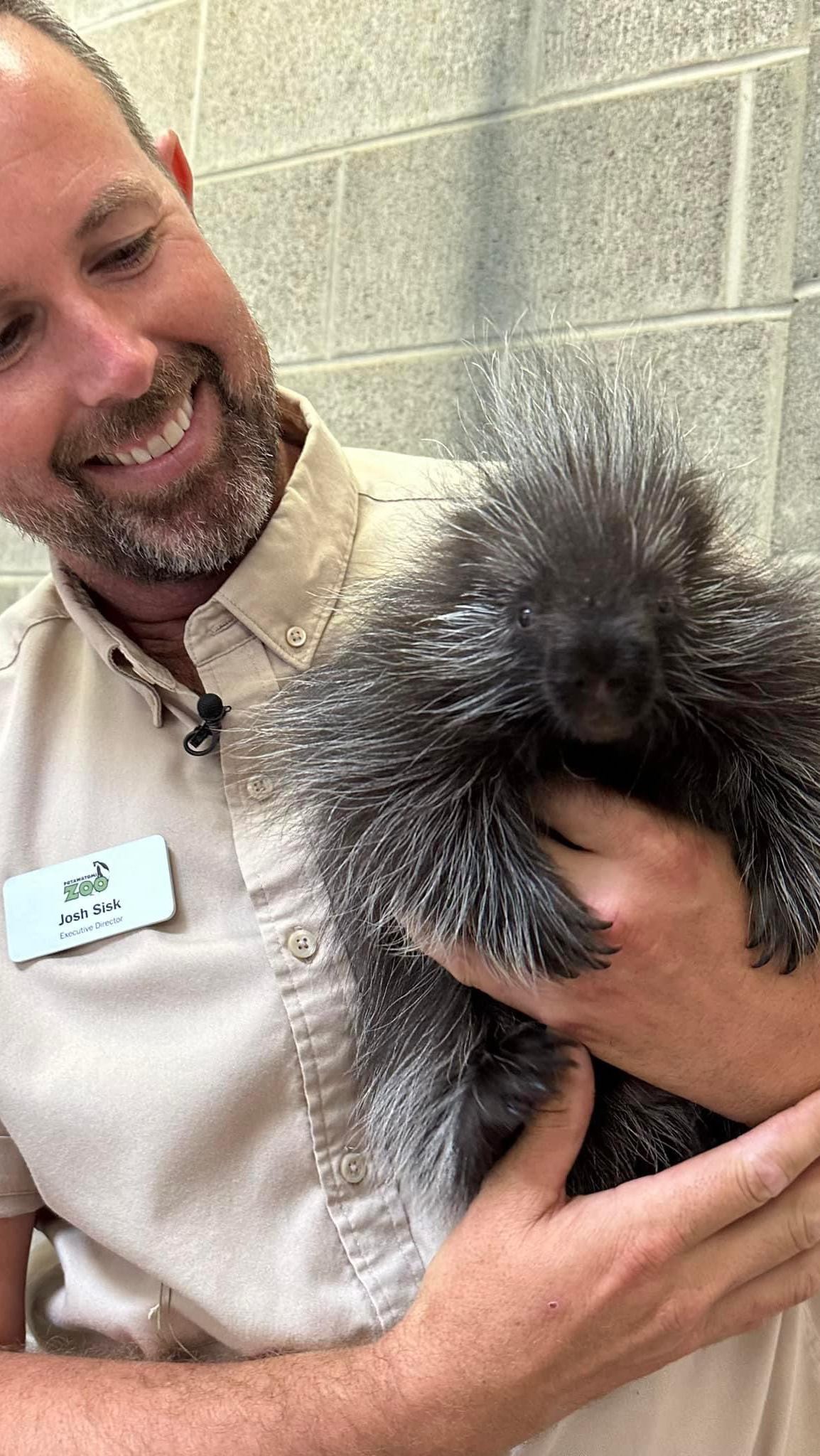Summary:
1. Meet the most perfect porcupine in the world, a baby North American porcupine.
2. She is currently behind the scenes but will eventually become an Ambassador Animal and companion for another porcupine named Humvee.
3. The article invites readers to suggest a name for the adorable baby porcupine.
She is introducing the most perfect porcupine in the world! She doesn’t have a name yet, but we can assure you, she didn’t need one for us to fall in love. This baby, a North American porcupine, is only about 3-4 months old and resides behind the scenes, given her young age. However, her future is promising, as she will soon move outside to become an Ambassador Animal and companion for Humvee, our male porcupine. But before that, we need your help in naming her!
Naming animals is always a fun and exciting part of the zoo experience. It allows us, as humans, to connect with these incredible creatures and give them a meaningful identity. And who could resist the opportunity to name the world’s most perfect porcupine?
First, let’s take a moment to appreciate porcupines’ uniqueness and fascinating aspects. These spiky mammals are well-known for their quills, which are modified hairs covering their bodies. Contrary to popular belief, they cannot shoot these quills, but they are excellent at defending themselves by raising and rattling their quills as a warning sign. They will turn their backs when threatened, exposing the sharp quills to deter potential predators. It’s truly an astounding defense mechanism!
Porcupines are primarily nocturnal animals, meaning they are most active at night. This is why our baby porcupine is being kept behind the scenes, allowing her to adjust to her new environment and develop a routine without any disturbances. But soon, she can interact with visitors as an Ambassador Animal.
Ambassador Animals are crucial in educating the public about wildlife and conservation. By meeting these animals up close, visitors can develop a deeper understanding and appreciation for their unique traits and the importance of preserving their habitats. Our adorable baby porcupine will serve as a wonderful example of the incredible diversity found in the natural world.
Now, let’s talk about her future companion, Humvee. Humvee is a male porcupine who has lived at our zoo for quite some time. Keeping porcupines together ensures companionship and mental stimulation, enhancing their overall well-being. While they may not be the most affectionate creatures, they form bonds within their social groups, providing an enriching environment for their lives.
We believe that giving our porcupines meaningful names is essential, as it helps foster a connection between them and the visitors who see them. It’s an opportunity for everyone to become a part of their story and appreciate each animal’s individuality. So, we invite you to suggest a name for our charming baby porcupine!
Feel free to be as creative and imaginative as possible. A name that embodies her unique personality, spunkiness, and inherent cuteness would be fantastic. It could be derived from her appearance, characteristics, or even the magnificent tale of her upbringing. We can’t wait to see the suggestions pouring in!
In conclusion, our baby North American porcupine is the world’s most perfect porcupine. She brings joy, wonder, and awe to all who encounter her. As she prepares to become an Ambassador Animal alongside Humvee, she has the opportunity to touch the hearts and minds of visitors, inspiring them to appreciate and protect the natural world. So, let’s join together and find the perfect name for this extraordinary creature.
*****
Source Description
We are introducing the most perfect porcupine in the world! She doesn’t have a name yet, but we can assure you, she didn’t need one for us to fall in love.
This North American porcupine baby is only about 3-4 months old. She’s behind the scenes right now since she’s new and very young, but eventually, she’ll move outside to be an Ambassador Animal and companion for Humvee, our male porcupine.
What would you name her?


